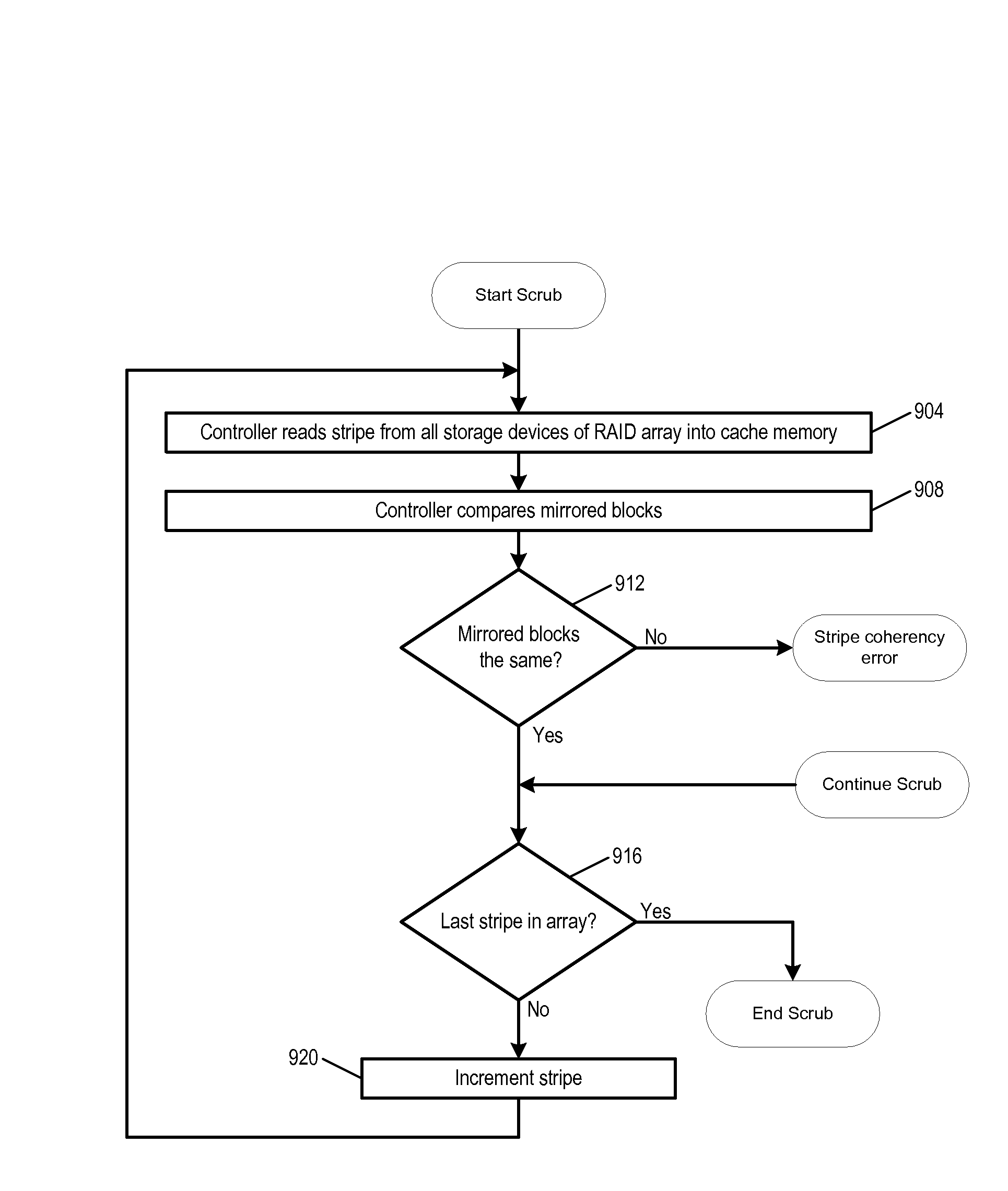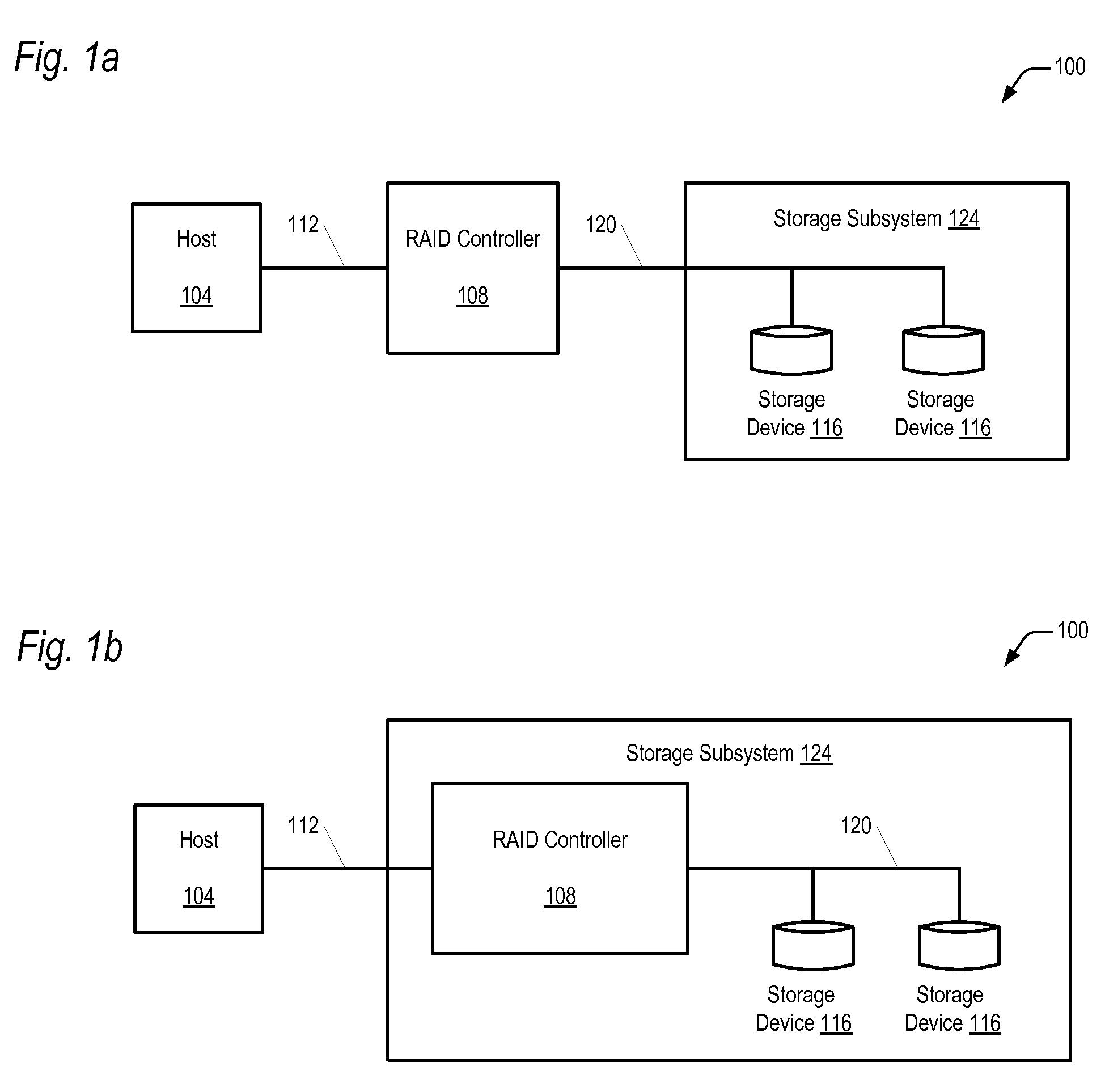Apparatus and method for identifying disk drives with unreported data corruption
a technology of unreported data and apparatus, applied in the field of raid controllers, can solve the problems of not all raid levels provide data redundancy, require fairly complex and require a large amount of controller and parity generation circuitry or softwar
- Summary
- Abstract
- Description
- Claims
- Application Information
AI Technical Summary
Benefits of technology
Problems solved by technology
Method used
Image
Examples
second embodiment
[0114]Referring now to FIG. 11, a flowchart illustrating an analyze operation for a RAID array following a stripe coherency error is shown. Flow begins at block 1104.
[0115]At block 1104, writes are blocked to the current stripe by locking the current stripe in stripe cache 608, i.e., the RAID controller 108 prevents writes to the current stripe of the redundant array. Recall that data is previously read into the stripe cache 608 in blocks 704, 804, and 904 of FIGS. 7, 8, and 9, respectively. Additionally, subsequent times through the outer loop of FIG. 11, the data is read into the stripe cache 608 at block 1140, as described below. Flow proceeds to block 1108.
[0116]At block 1108, the RAID controller 108 allocates a new buffer in cache memory equal to the block size. This new buffer will be the block cache 612 of FIG. 6. The size of block cache will be the size of a block, which is the amount of data on one storage device 116 in one stripe 402-410. Flow proceeds to block 1112.
[0117]...
third embodiment
[0129]Referring now to FIG. 12, a flowchart illustrating an analyze operation for a RAID array following a stripe coherency error is shown. This embodiment is similar to that shown in FIG. 11, with the exception that this embodiment does not continue to analyze blocks on storage devices 116 that have previously been identified and recorded as failing storage devices 116. Flow begins at block 1204.
[0130]At block 1204, writes are blocked to the current stripe by locking the current stripe in stripe cache 608, i.e., the RAID controller 108 prevents writes to the current stripe of the redundant array. Recall that data is previously read into the stripe cache 608 in blocks 704, 804, and 904 of FIGS. 7, 8, and 9, respectively. Additionally, subsequent times through the outer loop of FIG. 12, the data is read into the stripe cache 608 at block 1240, as described below. Flow proceeds to block 1208.
[0131]At block 1208, the RAID controller allocates a new buffer in cache memory 514 equal to t...
PUM
 Login to View More
Login to View More Abstract
Description
Claims
Application Information
 Login to View More
Login to View More - R&D
- Intellectual Property
- Life Sciences
- Materials
- Tech Scout
- Unparalleled Data Quality
- Higher Quality Content
- 60% Fewer Hallucinations
Browse by: Latest US Patents, China's latest patents, Technical Efficacy Thesaurus, Application Domain, Technology Topic, Popular Technical Reports.
© 2025 PatSnap. All rights reserved.Legal|Privacy policy|Modern Slavery Act Transparency Statement|Sitemap|About US| Contact US: help@patsnap.com



